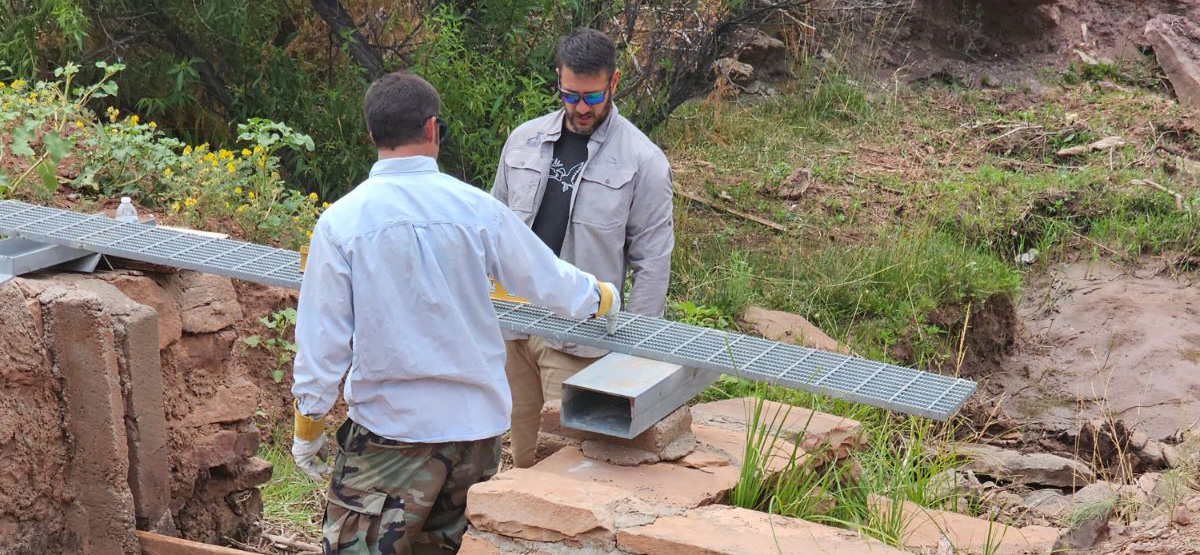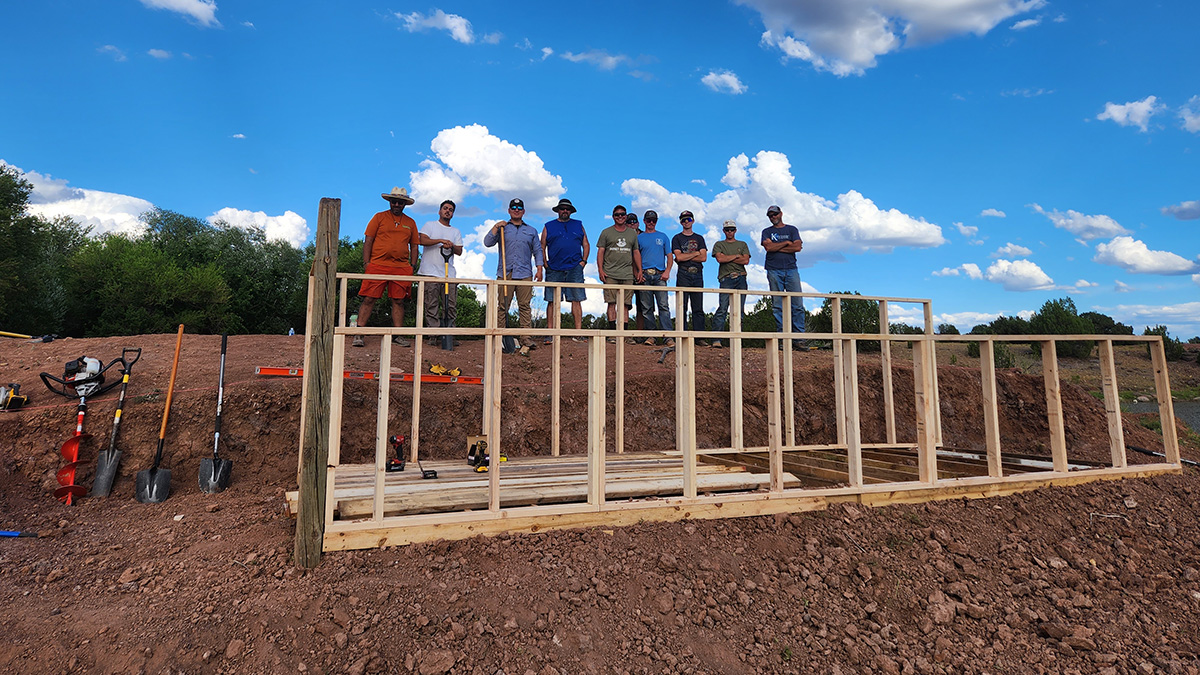Ish Monroe-At Helm-1500-Credit Ish Monroe
Do you have any thoughts on this post?
Group supports access priorities and urges proactive planning to conserve habitat
Today, the Bureau of Land Management unveiled a new plan for managing outdoor recreation on the agency’s 245 million acres of federal public lands. The plan was dubbed by the BLM as a necessary step for the agency to “proactively meet modern demands for exceptional and unique outdoor experiences.”
The Theodore Roosevelt Conservation Partnership agreed with the agency that a proactive recreation plan is needed for the BLM and responded favorably to the new proposal.
“Given skyrocketing visitation pressure on BLM lands, we concur that the agency needs to proactively manage recreation to provide access while prioritizing habitat conservation,” said Joel Webster, VP of western conservation with the Theodore Roosevelt Conservation Partnership. “We appreciate BLM’s recognition of the importance of securing access to landlocked public lands, implementing the MAPLand Act, and completing travel management planning, all while protecting sensitive resources like wildlife habitat.”
The BLM’s plan highlights four pathways to success. Each of those pathways offer specific directions for numerous management issues, including the need for the agency to acquire access; prioritize and embrace partnerships; expand diversity, equity, and inclusion to programs, exhibits, and signs; and to protect sensitive resources.
“TRCP plans to weigh in with the BLM on how to implement the plan, including ideas for expanding access for the public and providing for outdoor recreation, while ensuring fish and wildlife habitat continue to function on our public lands,” continued Webster. “We can have both expanded outdoor opportunities and robust wildlife populations, and it will require funding and a shared commitment to effectively manage for these different resource values.”
Learn more about TRCP’s commitment to guaranteeing all Americans quality places to hunt and fish here.
Photo Credit: James Wicks
Newly established Wildlife Management Areas and critical management updates seek to protect and enhance high-value habitat for big game
The over three million acres of public land that make up the Grand Mesa, Uncompahgre, and Gunnison National Forests in Western Colorado will soon have an updated management plan thanks to the hard work and years of public and partner engagement by Forest Service staff.
The GMUG National Forests comprise hunting units where approximately 50,000 big game hunting licenses are allocated annually, and support nearly 20 percent of the state’s iconic mule deer and elk populations. The GMUG currently hosts 3,000 miles of sanctioned recreational trails, four scenic byways, six peaks over 14,000 feet, 10 Wilderness areas, and over 3,600 miles of perennial streams. If the Forest Service adopts its preferred alternative in the final environmental impact statement and approves its draft record of decision, 834,000 acres (28% of the GMUG Forests) would be managed with a focus on conserving important seasonal habitats for big game and other wildlife species.
“The management objectives and guidelines specific to over 800,000 acres of newly defined Wildlife Management Areas that seek to maintain and improve habitat connectivity and function, including vegetation management projects designed to improve habitat long term, will benefit hunter and angler opportunity,” praised Liz Rose, TRCP’s Colorado field representative.
The proposed GMUG National Forests’ Revised Land Management Plan aims to protect and reinforce the forests’ value to recreationists, local communities, and wildlife through active and adaptive management as social and environmental pressures continue to change. A century of fire suppression combined with ever-increasing risks from drought and wildfire and unprecedented increases in recreational use means that planning, active management, and monitoring, all informed by the best available data and science, is needed to restore diverse, healthy, natural systems across the GMUG Forests.
“Wildlife need healthy forests in the near and long term and status quo is not an option for maintaining them,” explained Patt Dorsey, west region director of conservation operations for the National Wild Turkey Federation. “Forest restoration activities that maintain forest resilience are crucial on the landscape and project level.”
The proposed plan aims to steer future recreational trail expansion away from Wildlife Management Areas, designated and proposed Wilderness, and other special areas such as Research Natural Areas. Furthermore, in Wildlife Management Areas, the Forest Service intends to maintain a lower density of roads and trails in order to minimize habitat fragmentation and year-round disturbance to wildlife. This management standard will help make Wildlife Management Areas high-quality habitats for deer, elk, bighorn sheep, pronghorn, Gunnison sage-grouse, and other wildlife. The TRCP looks forward to working with the Forest Service to finalize the proposed GMUG to benefit Colorado’s fish, wildlife, and outdoorspeople.
The Forest Service will accept formal objections during a 60-day objection period. Following this period, the Forest Service may revise its plan then issue a record of decision and adopt the plan as final. The TRCP encourages the Forest Service to adopt a final plan expeditiously so GMUG staff can begin 2024 with updated direction to improve fish, wildlife, and watershed health, and provide opportunities for people to safely, confidently, and successfully utilize and enjoy time spent on Colorado’s special public lands.
Learn more about TRCP’s commitment to guaranteeing all Americans quality places to hunt and fish here.
In early August, I joined a group of volunteers with Impact Outdoors New Mexico on behalf of the Theodore Roosevelt Conservation Partnership to help complete three projects on a local landowner’s property near Santa Rosa, New Mexico. The projects benefited wildlife, hunters, and the ranching operation.
Impact Outdoors is a nonprofit organization dedicated to impacting communities through education, conservation, and meaningful outdoor opportunities like hunting and fishing. By fostering strong relationships and community, for both veterans and youth, Impact Outdoors builds a cadre of strong volunteers who possess a deep passion for the outdoors. Through Impact Outdoors, many of the youth and veterans volunteer their time to assist with habitat restoration on public and private lands.

Private landowners play instrumental roles for conservation, ensuring that public and private working lands are conserved and managed correctly benefits us all. Thanks to a great working relationship with a landowner near Santa Rose, NM, volunteers with Impact Outdoors had already been able to help restore wetlands, fence off riparian zones to protect cattle from over grazing and restore native grasses, and install water valves to ensure water gets to the appropriate locations on the property. Due to these past efforts, the leopard frog, which is listed as a species of conservation concern in New Mexico, has returned to the property.
The Hermit Peak and Calf Canyon Fire in 2022 burned northwest in the headwaters of the Pecos River and was the largest fire in New Mexico State history. This property is irrigated with water from the Pecos River. After the fire the region received large amounts of rain causing a carbon kill off in the river. Due to the quick actions of the landowner and Impact Outdoors NM they were able to keep the carbon out of the restored wetlands and maintain an intact macroinvertebrate source to reestablish in the Pecos River.

In a continuation of this important conservation work, I joined about 30 volunteers from Impact Outdoors NM as they set about tackling three new projects in coordination with the landowner. We installed a catwalk over a ditch headgate to ensure the landowners safety when changing water allocations for irrigation and providing water to the wetlands. We built a fully accessible duck blind that will accommodate a track chair and allow it to fully turn around. Lastly, we built a ramp and pully system that allows a layout boat to be launched into the wetlands allowing a hunter using a wheelchair to hunt waterfowl from the water with a volunteer from Impact Outdoors beside them in the water in waders.
The event was a great success and the completion of the three projects helped prepare the way for youth and veterans to have a quality location to hunt turkeys and waterfowl as well as fish this fall.
Click here to learn more about Impact Outdoors NM
Click here to learn more about private lands conservation programs

Wildlife and hunters win big in the BLM’s Four Rivers record of decision
Last week, after nearly eight years in the making, the Idaho Office of the Bureau of Land Management signed a Record of Decision on revisions to the Four Rivers Field Office resource management plan.
“This win for hunters is because Idaho’s outdoor community—hunters, outdoor business owners, wildlife professionals, conservationists, and outdoor recreationists—came together to ask for sensible, active management to perpetuate huntable wildlife populations in perpetuity,” said Rob Thornberry, Idaho field representative for the Theodore Roosevelt Conservation Partnership. “We owe a huge thanks to our wonderful hunting and fishing community.”
The plan, which will set guidance in the 783,000-acre field office for decades to come, includes a major win for hunters: a 120,800-acre Backcountry Conservation Area where BLM “will promote public access to support wildlife-dependent recreation and hunting opportunities and facilitate the long-term maintenance of big game wildlife populations,” according to the ROD.
When successfully implemented by the BLM, the Bennett Hills BCA will be managed to:
• Protect and enhance public access to world-class hunting.
• Conserve intact wildlife habitat, including crucial big game winter range and migratory habitats for six distinct mule deer, elk, and pronghorn herds.
• Prioritize management practices that restore habitat and control noxious weeds (i.e. treat cheat grass, control conifer encroachment, and allow water developments).
• Support and maintain traditional uses of the land such as ranching and hunting.
In addition to the conservation of the Bennett Hills, the new resource management plan will continue wildlife-friendly management in the Boise Foothills and the conservation of habitat for both long-billed curlew south of Emmett and Columbian sharp-tailed grouse near New Meadows.
Release of the final plan follows roughly a decade-long effort by TRCP to make BCAs a reality. That path included the release of a draft environmental impact statement and resource management plan in May 2019 where the agency’s preferred alternative excluded all wildlife protections from the plan, such as the then-proposed BCA, 11 Areas of Critical Environmental Concern, and one area identified as Lands with Wilderness Character.
The TRCP worked with Idaho Wildlife Federation, Trout Unlimited, Backcountry Hunters and Anglers, Idaho Chukar Foundation, and other independent hunters and anglers to facilitate the return of wildlife friendly protections, including reinstating the Bennet Hills BCA and Boise Front ACEC, to the final plan. The Boise Front ACEC is a key piece in this public land conglomeration puzzle because the area annually hosts thousands of wintering deer, elk, and pronghorn. Like the Bennett Hills BCA, it is critical for the long-term viability of deer, elk, and pronghorn.
Thirty-nine Idaho-based sporting businesses also advocated that BLM include significant conservation measures within the final plan.
Drew Wahlin, executive director of the Idaho Chukar Foundation, echoed those comments and gave special praise to the BLM.
“BLM deserves a huge thank you,” said Wahlin. “These conservation measures wouldn’t have been possible without the thoughtful leadership of BLM.”
Learn more about TRCP’s commitment to guaranteeing all Americans quality places to hunt and fish here.
Theodore Roosevelt’s experiences hunting and fishing certainly fueled his passion for conservation, but it seems that a passion for coffee may have powered his mornings. In fact, Roosevelt’s son once said that his father’s coffee cup was “more in the nature of a bathtub.” TRCP has partnered with Afuera Coffee Co. to bring together his two loves: a strong morning brew and a dedication to conservation. With your purchase, you’ll not only enjoy waking up to the rich aroma of this bolder roast—you’ll be supporting the important work of preserving hunting and fishing opportunities for all.
$4 from each bag is donated to the TRCP, to help continue their efforts of safeguarding critical habitats, productive hunting grounds, and favorite fishing holes for future generations.
Learn More
